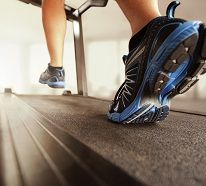Intense Exercise Beneficial Even after Age 65
Think you should hang up those running shoes after 65? Think again, Finish researchers report. Older people who spent at least 3 hours weekly working up a sweat and high heart rate had fewer heart events.

Fitness training shouldn’t have an expiration date, a study from Finland finds.
In research presented today at the European Society of Cardiology Congress 2016 in Rome, Italy, Riita Antikainen, a professor of geriatrics at the University of Oulu, Finland said moderate to intense physical activity was associated with a greater than 50% reduction in cardiovascular death in subjects over age 65.
Antikainen said hers was the first study looking at the effects of exercise on people that age.
The 12-year study, dubbed FINRISK, looked at nearly 2,500 people ages 65 to 74.
During a median follow-up of 11.8 years, 197 participants died from CVD and 416 had a first CVD event. But those who stepped up their physical activity did best.
The team found that even moderate activity—defined as walking, bike riding, and gardening or other activities requiring similar levels of exertion--reduced the risk of an acute cardiovascular events by more than 30%. High levels of physical activity—such as jogging, skiing, gymnastics, swimming, or playing competitive sports like tennis, led to greater risk reductions.
“It’s dose-dependent,” she said a news conference discussing the study today, “The more you do the better.”
Her fellow panelists agreed that the findings should lead to physicians advising their older patients to get more intense exercise.
That is already a common piece of advice in Sweden, said Joep Perk, “In Sweden when you go to a gym you think it’s an old persons’ home.”
Swedes have taken to exercise, he added, “In Sweden they are sufficiently aware they have to do this for themselves, that it’s not just thinking doctors will fix it when you get sick."
Baseline data in the study included self-administered questionnaires on physical activity and other health-related behaviors.
Clinical measurements included blood pressure, weight, height, and cholesterol levels.
Participants were followed through 2013.